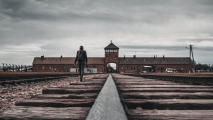About Auschwitz

Visiting Auschwitz is a deeply emotional and educational experience. It is a reminder of the horrors of the Holocaust and an opportunity to honor the memory of the millions who lost their lives during that dark time in history. For Jews, in particular, a visit to Auschwitz can be a powerful way to connect with their heritage and the history of their people.

In this article, we will explore what to expect on an Auschwitz tour and how to understand the experience of Jews in Auschwitz.
The History of Auschwitz
Auschwitz was the largest Nazi concentration camp during World War II. Located in Poland, it was a site of mass murder and a symbol of the Holocaust. Over one million people, mostly Jews, were killed at Auschwitz between 1940 and 1945. The camp was liberated by Soviet forces in January 1945, and has since become a museum and a UNESCO World Heritage Site.
Planning Your Auschwitz Tour
If you are planning a visit to Auschwitz, there are several things you should keep in mind. First, it is important to book your tour in advance. This will ensure that you have a guaranteed spot and that you will be able to choose the time and date that works best for you. It is also recommended to dress appropriately for the weather and wear comfortable shoes, as the tour involves a significant amount of walking.
What to Expect on an Auschwitz Tour
During your tour of Auschwitz, you will see the remains of the gas chambers, crematoria, and barracks where prisoners were held. You will also have the opportunity to visit the Museum Exhibition, which displays artifacts and documents related to the history of the camp. The tour is led by a knowledgeable guide who will provide historical context and answer any questions you may have.
Understanding the Experience of Jews in Auschwitz
For Jews, visiting Auschwitz can be an emotional and powerful experience. It is a chance to connect with the history of their people and to pay tribute to those who lost their lives. Some visitors choose to say the Kaddish, a Jewish prayer of mourning, at the site. It is also common for visitors to leave stones or other tokens of remembrance at the memorials located throughout the camp.

Conclusion
Visiting Auschwitz is a powerful way to honor the memory of those who lost their lives during the Holocaust. For Jews, in particular, it can be an emotional and educational experience that connects them with their heritage and the history of their people. By planning your tour in advance and understanding what to expect, you can ensure that your visit to Auschwitz is respectful and meaningful.





